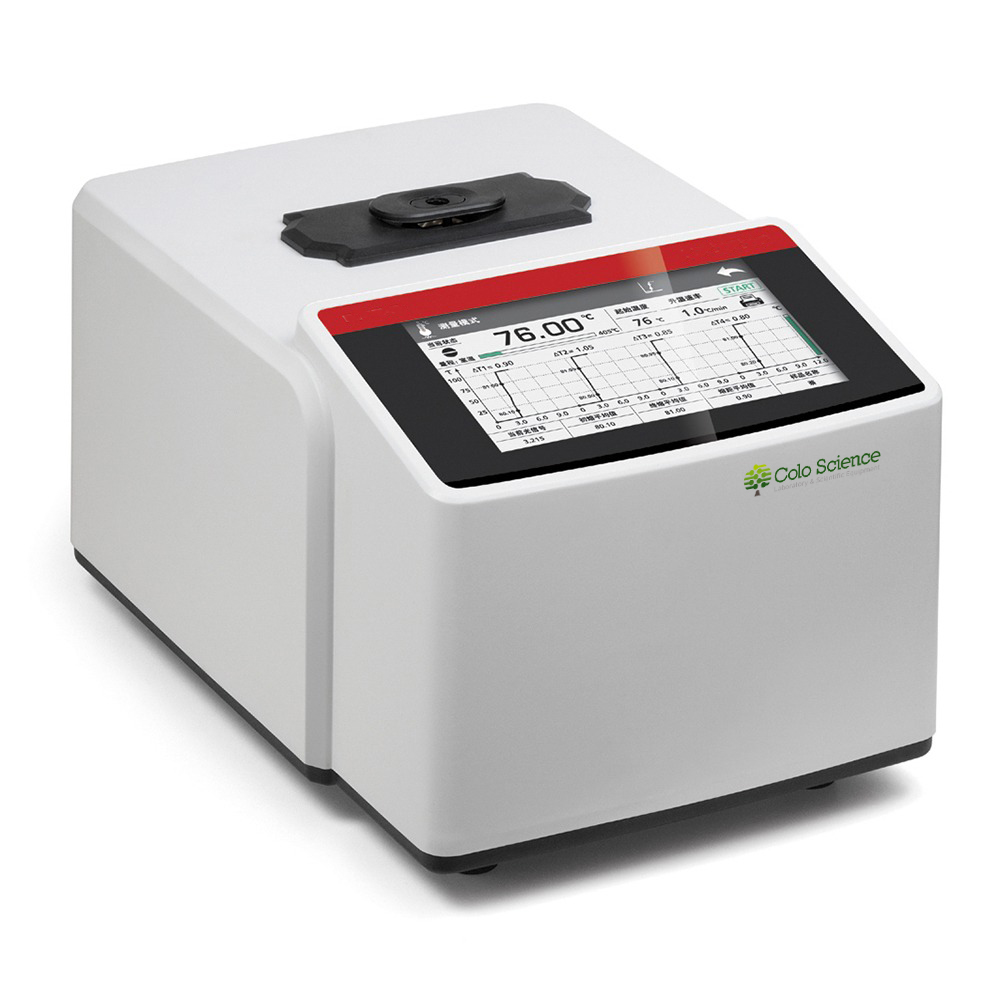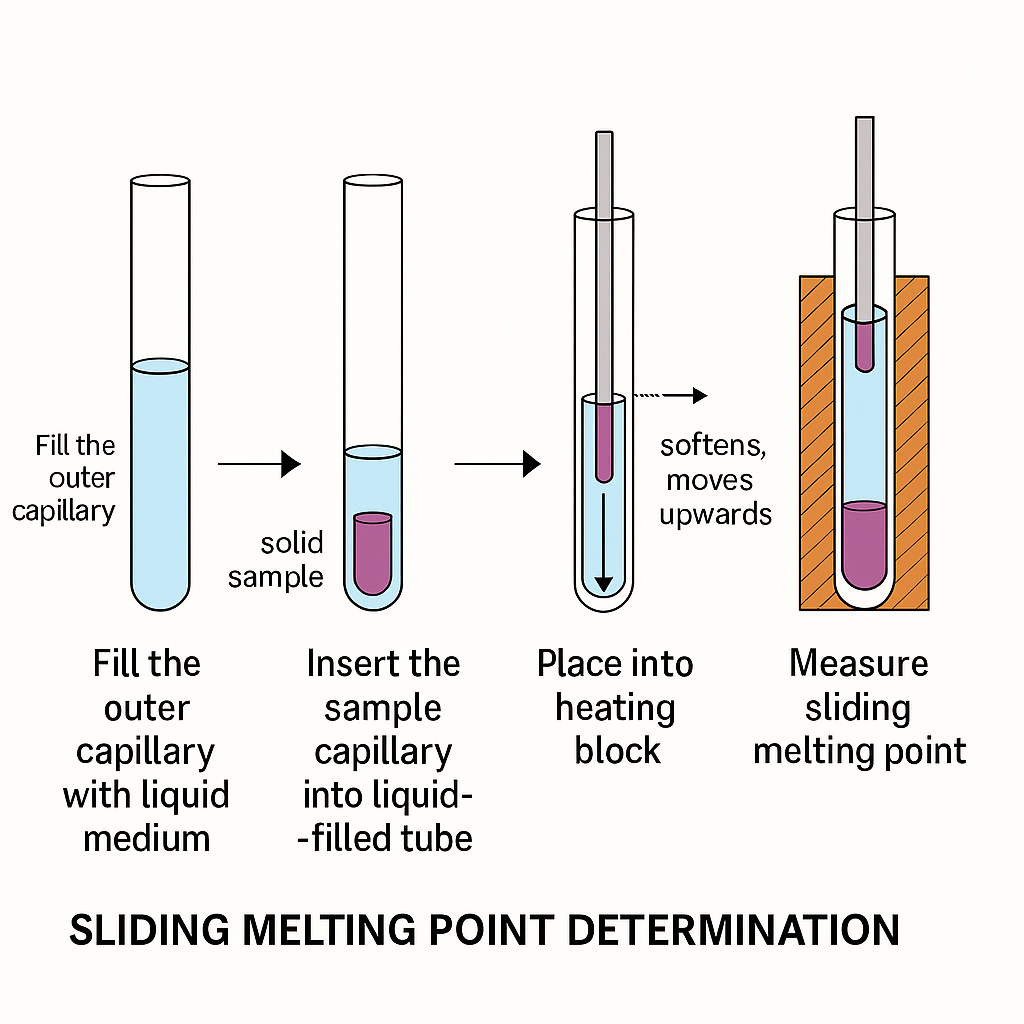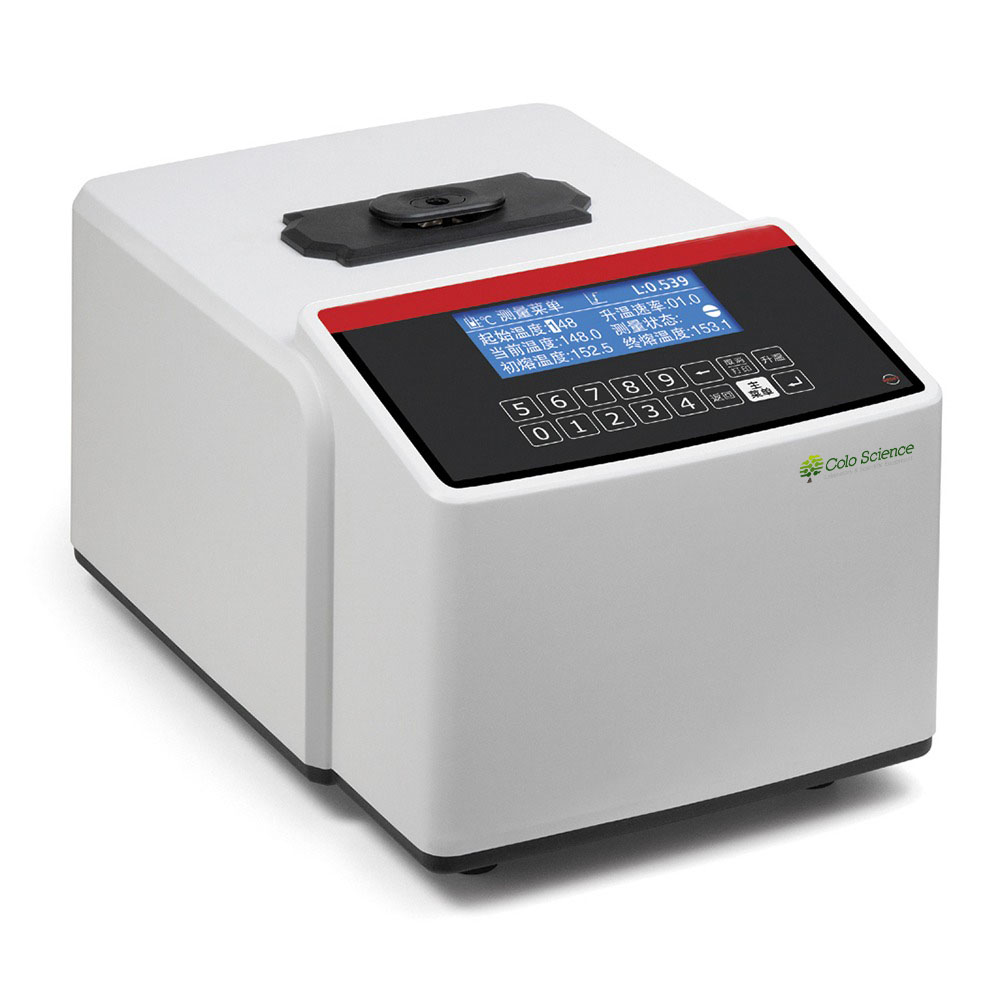In almost every chemistry, pharmacy or materials laboratory, there is a quiet moment when everything stops. The sample in the tiny capillary begins to soften, collapse, and finally turn into a clear liquid. This short temperature interval — the melting point — remains one of the most reliable tools for understanding organic substances, medicines and fine chemicals.

CMPA1 Melting Point Apparatus with Microscope – classical capillary method with direct visual control
✔ COLO LAB STORE · MELTING POINT
Explore COLO Melting Point Instruments
From capillary tubes to digital video melting curves
Historically, melting points were measured with a thermometer and an oil bath. The operator watched the sample closely and noted the first and last signs of melting. Today, modern instruments automate the process while remaining aligned with standards such as European Pharmacopoeia 2.2.14 and USP <741>. At COLO.Science, we focus on three complementary platforms:- CMPA1 – Visual Melting Point with Microscope Ideal for studying melting behaviour, training new users or resolving ambiguous automated results.
- CMPA3 – Fully Automatic Micro-Processor Melting Point Designed for routine QC, reproducible results and stable heating control.
- CMPA7 – Advanced Image-Analysis Video Melting Point A high-end system with AUTO-ROI® detection, HD camera, video recording, curves and full data integrity tools.
What do we really measure at the melting point?
Most substances do not melt at a single temperature. Instead, they move through a short transition that includes softening, meniscus formation and coexistence of solid and liquid phases. Pharmacopoeias therefore define onset, melting range and clear point, and they describe strict ramp rates, sample height and capillary dimensions. Temperature stability and precise heating control are essential for reliable results.IN PRACTICE
For pure APIs and reference standards, a narrow melting range confirms high purity and correct identity. A wider range may indicate impurities, residual solvents, degradation or polymorphism. A well-documented melting point is therefore both an analytical result and part of the data integrity story.

We design our melting point portfolio around a simple idea – the chemist should decide what to measure, and the instrument should take care of controlled heating, detection and traceable documentation.COLO.Science
Standards, reference materials and calibration
Pharmacopoeial chapters describe how to verify accuracy using certified reference substances. They define heating rate tolerances, capillary dimensions and sample height. All COLO instruments are designed for these requirements. Ramp rates can follow pharmacopeial values, and results can be exported or printed for complete QC documentation.COLO MELTING POINT PORTFOLIO
- CMPA1 – visual microscope-based melting point for detailed observation.
- CMPA3 – fully automatic melting point for routine QC.
- CMPA7 – advanced video system with AUTO-ROI® and full data integrity.
Together, they offer the right balance between visualization, throughput and compliance.
Melting point at COLO.Science
On COLO.Science we explore melting points not only as a number but as a view into solid-state behaviour. Whether you are qualifying a new API, comparing suppliers, teaching students or preparing for an inspection, a well-designed melting point method increases confidence in your results. For support or instrument suggestions, you can contact our team at sales@colo.si.How to Prepare Capillaries and Samples for Melting Point Determination

1) Choose the Correct Capillary Tubes
- Thin-wall capillary (open both ends): used for solid drug/substance loading.
- Outer capillary (closed at one end): acts as the liquid-filled heating sleeve for sliding melting point tests.
- Ensure capillaries are clean, dry and free of residue.
- Sample height in the inner capillary must be approximately 10 mm after filling.
2) Insert the Sample into the Inner Capillary
- Place a small amount of finely powdered sample on a clean surface.
- Push the open end of the thin capillary into the powder until 2–3 mm of the sample enters the tube.
- Tap the closed end gently to settle the sample at the bottom.
- The powder must be compact, with no air gaps.
3) Fill the Outer Capillary with Calibration Liquid
- Fill the outer (closed-end) capillary with the recommended calibration liquid to the specified level.
- Carefully insert the inner capillary containing the sample.
- The liquid level must rise at least 10 mm above the sample for proper sliding measurement.
4) Heating Process & Sliding Melting Point Observation
- Place the assembled capillaries into the instrument’s heating furnace.
- During heating, the solid sample softens and begins to move upward inside the liquid column.
- The instrument automatically detects: – Initial melting – Full melting – Sliding melting point
- No manual supervision is required—CMPA instruments handle all detection automatically.


